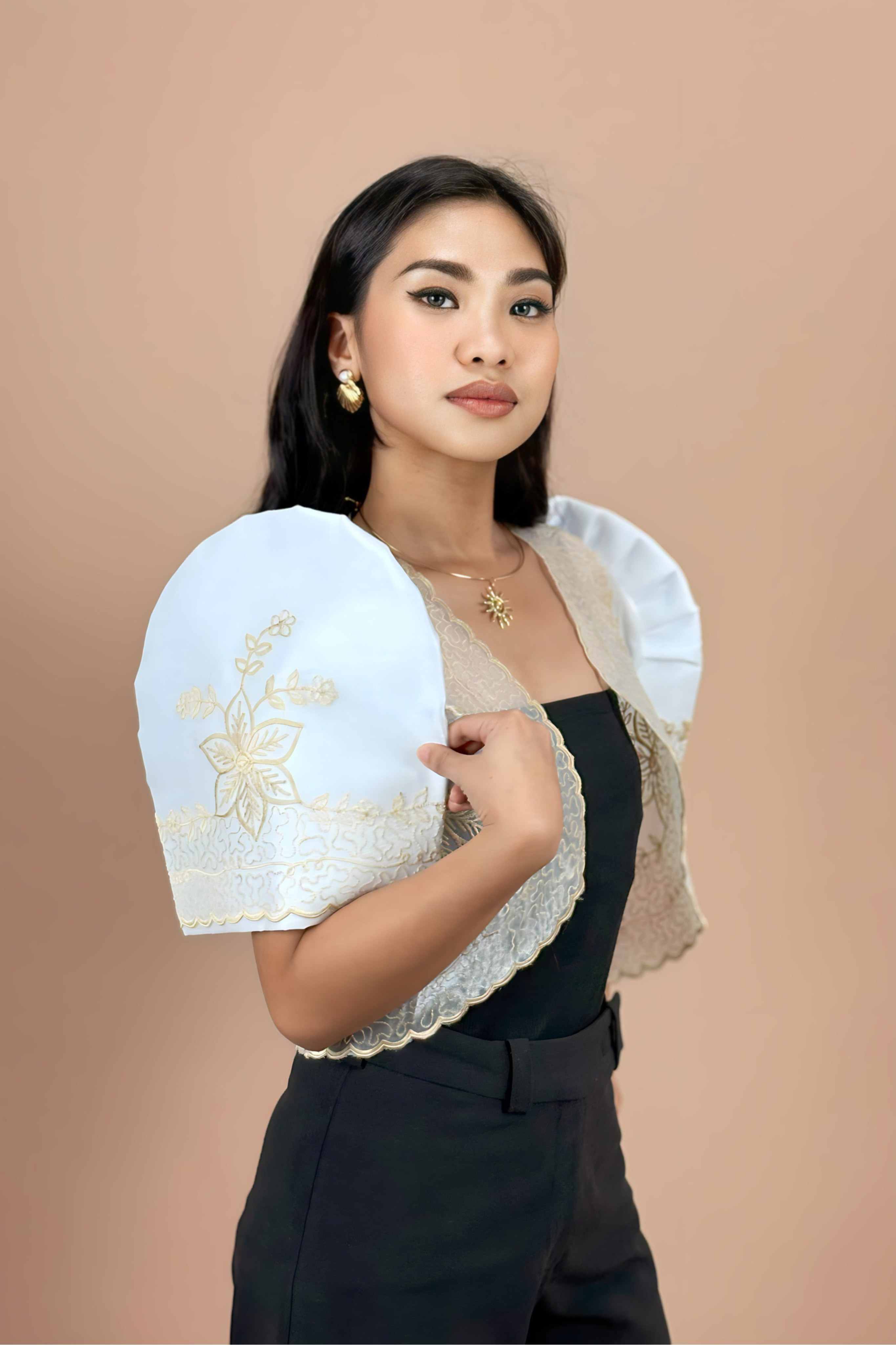The Alampay: A Symbol of Filipina Grace, Strength, and Style
In the world of traditional Filipino fashion, few accessories hold as much meaning and elegance as the alampay. Often seen delicately draped over the shoulders of women dressed in the Baro’t Saya or Maria Clara, the alampay is more than a sheer shawl or a beautiful accent — it’s a symbol of the Filipina herself: graceful, strong, and stylish.
A Legacy Woven in Sheer Threads
The alampay or pañuelo was used as early as the Spanish colonial period, where women were very refined in their manner, and there was a modesty that they had to abide by. The alampay was typically made of piña (pineapple fiber) or jusi, silk, and with a triangle shape. The alampay was worn over the woman’s shoulder and clasped at the chest using either a pin or brooch.
But it was not only fashion that mattered. The alampay was a symbol of propriety ‘hiya’ along with delicadeza, which means feminine refinement. These were core values in the Filipino culture. The alampay softened the neckline of the baro and added to the woman’s modesty. The sheer fabric also permitted a glimpse of skin under a whisper of cloth, which aided the idea of flirtation. The alampay is often paired with the timeless Filipiniana blouse, enhancing its silhouette and adding depth to any ensemble.

What makes the alampay timeless is its versatility. Although it originated in the 1800s, it continues to inspire modern fashion. Today’s designers reimagine the alampay in creative ways — with intricate embroidery, bold hues, and non-traditional textiles — to echo both heritage and innovation. Whether it’s worn with traditional ethnic dresses or draped over contemporary formal wear, the alampay adds a poetic, almost cinematic, flair.
The alampay may be soft, sheer, and lightweight






